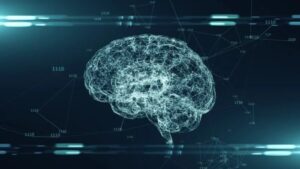
Adaptive learning systems are revolutionizing the educational landscape by tailoring learning experiences to meet individual student needs. This innovative approach not only enhances engagement but also promotes better academic outcomes by adjusting content and pacing based on real-time performance. By leveraging technology, adaptive learning creates an educational environment where each learner can thrive at their own pace.
These systems differentiate themselves from traditional educational methods through their ability to personalize learning. Key features such as data-driven insights, responsive feedback, and individualized learning paths empower educators to support students more effectively, ensuring that no one is left behind.
Introduction to Adaptive Learning Systems
Adaptive learning systems are innovative educational technologies designed to personalize the learning experience based on the unique needs and abilities of each student. These systems leverage algorithms and data analytics to adjust the content and pace of learning, ensuring that instruction is tailored to individual learning trajectories. This approach contrasts significantly with traditional educational methods, where a one-size-fits-all model often prevails, failing to accommodate diverse learning styles and paces.Personalized learning experiences are vital in today’s educational landscape, as they resonate more with learners and enhance engagement and retention.
Adaptive learning systems facilitate this personalization through various mechanisms, including real-time feedback, customizable learning paths, and data-driven insights into student progress. The ability to adapt to each learner’s needs not only fosters a deeper understanding of subject matter but also motivates students to take ownership of their educational journey.
Key Features of Adaptive Learning Systems
The distinguishing features of adaptive learning systems set them apart from traditional methods, making them a powerful tool for enhancing educational outcomes. These features include:
- Real-Time Data Analysis: Adaptive systems continuously assess student performance, analyzing responses and engagement levels to inform adjustments in content delivery.
- Personalized Learning Paths: Each student receives a customized learning experience that aligns with their strengths and weaknesses, allowing them to progress at their own pace.
- Immediate Feedback: Learners receive instant feedback on assessments and activities, which aids in reinforcing concepts and correcting misunderstandings promptly.
- Dynamic Content Adjustment: The system modifies the learning materials based on individual performance, offering more challenging tasks or additional support as needed.
- Engagement Metrics: Adaptive learning platforms utilize engagement metrics to keep track of how students interact with the material, ensuring that learners remain motivated and active participants in their education.
“Adaptive learning systems represent a shift towards a more student-centered approach, prioritizing the individual learning experience above all.”
These features collectively contribute to creating an environment where students can thrive, making adaptive learning systems a transformative addition to modern education. The integration of technology and personalization not only addresses the varying educational needs but also prepares learners for the complexities of the real world.
Benefits of Adaptive Learning Systems
Adaptive learning systems offer a transformative approach to education by tailoring the learning experience to individual student needs. This personalization can significantly enhance engagement, motivation, and ultimately, academic success. By leveraging data and analytics, these systems create a dynamic learning environment that encourages students to take ownership of their educational journey.
Enhanced Student Engagement and Motivation
One of the most notable benefits of adaptive learning systems is their ability to boost student engagement and motivation. These systems provide learners with customized content that aligns with their pace and learning style, making the educational experience more relevant and enjoyable. The following points illustrate how adaptive learning contributes to increased engagement:
- Personalized learning paths: Adaptive learning systems create tailored learning experiences based on individual performance, which can lead to a greater sense of achievement.
- Real-time feedback: Students receive immediate, constructive feedback on their performance, which helps them identify areas for improvement and fosters a growth mindset.
- Increased autonomy: By allowing students to choose their learning paths and pace, adaptive learning empowers them to take control of their education, enhancing motivation.
Impact on Student Performance and Academic Outcomes
The impact of adaptive learning systems extends to measurable student performance and academic outcomes. Research indicates that students using adaptive learning technologies often outperform their peers in traditional learning environments. Key factors contributing to this success include:
- Targeted support: Adaptive systems analyze student data to identify specific knowledge gaps, providing tailored resources that target weaknesses effectively.
- Improved retention: By presenting information in various formats and at the right level of difficulty, adaptive learning can enhance information retention and understanding.
- Higher completion rates: Students are more likely to stay engaged and complete their coursework when the material is adapted to their needs, leading to higher graduation rates.
Effectiveness Compared to Conventional Classroom Approaches
When comparing adaptive learning systems to conventional classroom approaches, several distinctions become evident. Traditional methods often employ a one-size-fits-all teaching strategy, which may not cater to the diverse needs of students. Adaptive learning, in contrast, allows for a more nuanced approach. The differences can be summarized as follows:
- Individualized attention: Adaptive learning provides each student with personalized instruction, while traditional classrooms often struggle to meet the unique needs of every learner.
- Data-driven insights: Adaptive systems utilize analytics to track progress and outcomes, enabling educators to adapt their teaching strategies effectively.
- Flexible pacing: Unlike conventional classrooms that follow a strict schedule, adaptive learning allows students to progress at their own pace, reducing anxiety and enhancing understanding.
Adaptive learning systems are not just another educational trend; they represent a fundamental shift towards a more personalized, efficient, and effective learning experience for students.
Implementation Strategies for Adaptive Learning Systems

Integrating adaptive learning technologies into educational institutions requires a well-structured approach to ensure success and maximize benefits for both educators and learners. This section Artikels a step-by-step plan for implementation, highlights the vital role of educators, and provides resources to assist in developing adaptive learning systems within curricula.
Step-by-Step Plan for Integration
Implementing adaptive learning systems involves a series of strategic steps that can facilitate a smoother transition and enhance overall learning outcomes. The following plan Artikels essential phases to consider:
- Needs Assessment: Evaluate the specific needs of students and educators to identify the challenges faced in the existing learning environment. Gather data on learning styles and gaps in knowledge.
- Technology Selection: Research and select appropriate adaptive learning technologies that align with the educational goals and infrastructure of the institution.
- Pilot Testing: Conduct a pilot program with a small group of students and educators to test the effectiveness of the selected adaptive learning tools. Gather feedback for improvement.
- Training and Professional Development: Provide comprehensive training sessions for educators on how to effectively utilize adaptive learning technologies to enhance teaching and learning.
- Full-Scale Implementation: Roll out the adaptive learning systems across the institution, ensuring continuous support and resources are available for educators and students.
- Monitoring and Evaluation: Regularly assess the effectiveness of the adaptive learning systems through analytics and feedback, making adjustments as necessary to improve learning outcomes.
Role of Educators in Utilizing Adaptive Learning Tools
Educators play a pivotal role in the successful implementation of adaptive learning systems. Their understanding and engagement with these technologies directly influence student success. Teachers must embrace the following responsibilities:
“Educators are not just facilitators of knowledge; they are also key players in personalizing learning experiences.”
Educators should actively engage with adaptive learning tools to tailor educational content based on individual student needs. This involves analyzing data provided by the systems to adjust teaching methods, offering personalized support, and creating a responsive learning environment. Additionally, they should foster a culture of openness and growth, encouraging students to take ownership of their learning journey through the adaptive system.
Resources and Tools for Developing Adaptive Learning Systems
To develop effective adaptive learning systems within curricula, a range of resources and tools can be leveraged. These resources help educators design and implement personalized learning experiences:
“The right tools can transform the classroom into a dynamic learning environment.”
Some notable resources include:
- Learning Management Systems (LMS): Platforms like Canvas and Moodle offer adaptable features for personalized learning paths.
- Assessment Tools: Tools such as Kahoot and Quizlet allow educators to create formative assessments that adapt based on student responses.
- Adaptive Learning Software: Programs like DreamBox Learning and Smart Sparrow provide tailored learning experiences based on student performance.
- Professional Development Resources: Websites like Edutopia and ISTE provide valuable training materials and best practices for using adaptive learning within classrooms.
- Data Analytics Tools: Tools such as Tableau or Google Analytics help educators analyze student data to inform instructional strategies.
Wrap-Up

In summary, adaptive learning systems represent a significant advancement in education, offering personalized pathways that cater to diverse learning styles and paces. As institutions increasingly embrace these technologies, the potential for improved student engagement and performance continues to rise. Ultimately, the integration of adaptive learning represents a promising future where education becomes more equitable and effective for all learners.
FAQ Insights
What are adaptive learning systems?
Adaptive learning systems are educational technologies that customize learning experiences based on individual student performance and needs.
How do adaptive learning systems improve engagement?
They enhance engagement by providing personalized content that matches students’ learning styles and pace, keeping them motivated and interested.
Can adaptive learning systems be used in traditional classrooms?
Yes, adaptive learning systems can be integrated into traditional classrooms to complement conventional teaching methods and enhance overall learning.
What role do educators play in using adaptive learning systems?
Educators facilitate the effective use of adaptive learning tools by guiding students, interpreting data, and adjusting instruction based on insights provided by the system.
Are adaptive learning systems effective for all students?
Yes, adaptive learning systems can benefit a wide range of students by addressing diverse learning needs and preferences, making education more inclusive.




